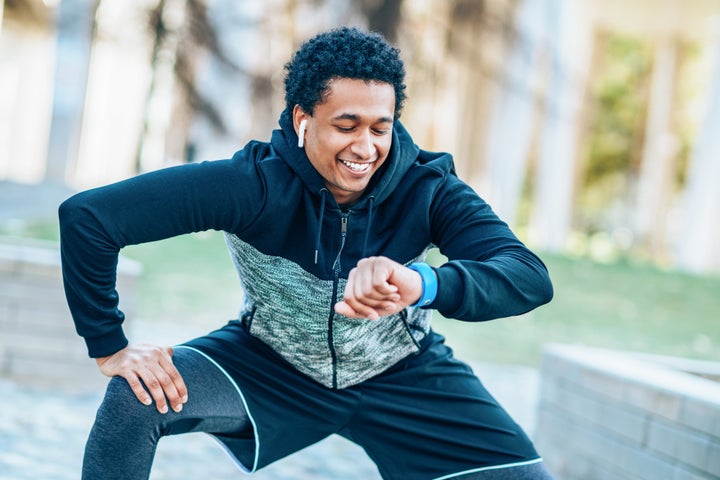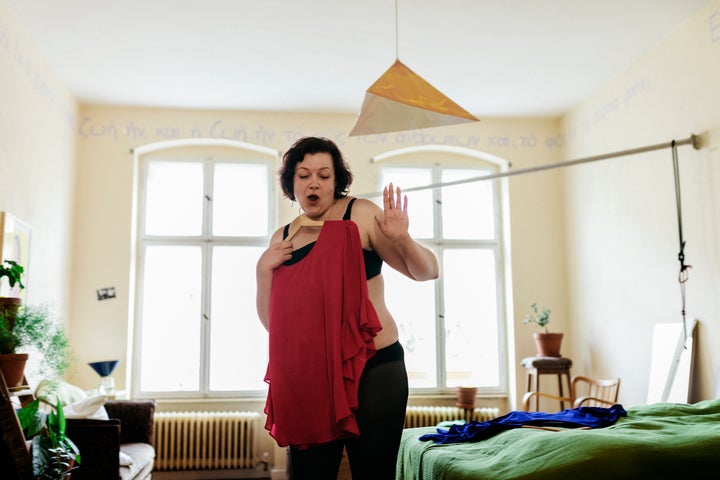Transforming into an early riser is simpler than you think.
Wouldn’t it be wonderful if you could magically turn yourself into a morning person? This doesn’t have to be just a dream: A group of sleep researchers developed a method that could very well transform the way you feel during the wee hours of the morning — or at least help you feel a little less sluggish in the a.m.
The science-backed process ― called the RISE-UP method ― was created a few years ago, but it’s especially helpful now. The pandemic has made sleep inertia — the transitional state between sleep and wake, marked by grogginess, impaired performance, and a desire to return to sleep — more common, said sleep researcher Kate Kaplan, a clinical instructor at the Stanford University School of Medicine. Adjusting your morning habits using the technique may help reverse some of those effects.
“I think we’re living in very unique times from a sleep perspective,” she said, adding that as our schedules are drifting later, our sleep inertia might be getting stronger. Commuting to school or work, the acts of packing lunch and getting dressed — these are all helpful for “decreasing sleep inertia and helping reset our biological rhythm,” Kaplan explained. For many of us, those routines have been cut short or entirely annihilated, so it makes sense that we’re feeling more tired than we did in pre-pandemic days.
Kaplan and her colleagues devised the RISE-UP method in 2018 to help people get up in the morning. After rounds of research and testing, they ultimately developed the strategy to combat sleep inertia. With the new (slower) pace of our work-from-home mornings, the technique may prove to be more useful than ever. The RISE-UP method consists of six principles that can help minimize the experience of sleepiness. Here’s what each letter stands for:
R – Resist the urge to hit the snooze button
I – Increase your activity for the first hour
S – Shower (or wash your face and hands with cold water)
E – Expose yourself to sunlight
U – Upbeat music
P – Phone a friend
Every principle of the RISE-UP method is a bit more nuanced than it is prescriptive, so let’s go through all six individually.
R: Resist the urge to hit the snooze button
This one doesn’t have much wiggle room: Stop hitting snooze. When you do, you’re constantly interrupting your REM sleep, which is the restorative part of your sleep cycle, according to the Cleveland Clinic. When restorative sleep fails to be restorative, you end up feeling groggy and unrested. While, in the moment, it can feel like getting just a few more minutes of shut-eye will help you feel rested, hitting snooze actually does the opposite.
In addition to setting just one alarm clock and sticking to it, Kaplan strongly suggests waking up around the same time every day — and, unfortunately, that goes for weekends, too.
“Try to have consistency in the time you get out of bed,” she said. “That helps to keep our biological clock in the same time zone. When we vary our sleep times from weekdays and weekends, that kind of chronic jet lag can be pretty confusing for the body.”
And, if you happen to go to bed late one night, you should still aim to wake around the same time rather than attempt to make up for lost hours in the morning. “It would be better to wake up at the same time and take a nap rather than sleep in,” Kaplan said.

I: Increase your activity for the first hour
Getting some physical activity in your morning routine doesn’t have to be complicated: Take the dog out for a jaunt, walk to the coffee shop or do a few laps around the block if an early sweat session is not your cup of tea.
A little movement gets your blood flowing and signals to the body that a new day has started. You may see some serious improvement in your grogginess if you once walked (even partway) to the office or religiously started your day at the gym. Pandemic life may have altered these routines, but there’s no reason not to re-build physical activity into your morning.
One convenient aspect of the RISE-UP method is that you can combine some of the elements and still benefit from them. So you don’t have to squeeze in physical activity, then get sunlight, then listen to the radio. You can do all three at once.
S: Shower
“It’s the cold that we think is key,” Kaplan said of a morning shower. “There have been some trials showing that our levels of alertness are tied to different temperature parameters,” she continued, adding that when our extremities (like our hands and feet) are cold, we tend to feel more alert.
The opposite is also true — having warm hands and feet can aid the process of falling asleep, Kaplan said, which is why taking a warm bath before bed or slipping on some comfy socks can ease you into slumber.
Morning showers are not for everyone — especially if it’s not your hair washing day or if you’re planning to work out later — but you can still benefit from this step by splashing some cool water on your face. While there’s not an enormous body of research to support this, one clinical trial did show that study participants who splashed water on their faces post-nap reported reduced feelings of sleepiness compared with their dry-faced counterparts.
E: Expose yourself to sunlight
“Getting sunlight exposure in the morning is really important — especially if you’re not leaving the house [otherwise],” Kaplan said. “Morning sunlight is the most powerful anchor around which our internal rhythms can align.”
This one’s pretty simple when the weather’s nice, and as previously mentioned, can and should be combined with some of the other principles of the method to get a real bang for your buck.
When it’s not a sunny day or you’re fighting sleep inertia in the winter months, you can use artificial light to get the same benefits. “Light boxes are a great hack — and they’re getting cheaper and cheaper,” Kaplan said. A full-spectrum lamp is another option.
If you’re feeling the midday slump, sunlight exposure can help with that, too, Kaplan said. In fact, most of the principles of the RISE-UP method can help combat tired feelings beyond the morning, so consider them as part of your anti-groggy arsenal.

U: Upbeat music
Listening to music is a great way to snap out of the half-awake dimension and into reality. To benefit from this step, you don’t have to tune in to the Top 100 charts.
“Any noise with moderate intensity” can incite wakefulness, Kaplan said, adding that a podcast, audiobook or even the news will work just fine. “Just make sure you [listen] while on your feet and moving around and not sitting still and stationary, if possible,” she said.
Perhaps you’ll consider catching up with the morning headlines while on your walk out in the sunlight for best results.
P: Phone a friend
“Any kind of social contact you can have has been shown to promote alertness,” Kaplan said. You certainly can call a buddy (maybe you and an anti-sleep-inertia friend hold each other accountable?), or you can also cross off this item by chatting with the barista, your doorman or even the people in your household. A little chitchat can wake up your brain and get you ready for the day ahead.
If you care to give this routine a shot, try it out for at least a week or so before you decide if it works for you. And don’t drive yourself nuts: You don’t have to cross off every letter of RISE-UP to beat sleep inertia.
“If you just manage three or four, that’s great,” Kaplan said. Besides feeling exhausted in the morning, what do you have to lose?
Credit: Source link